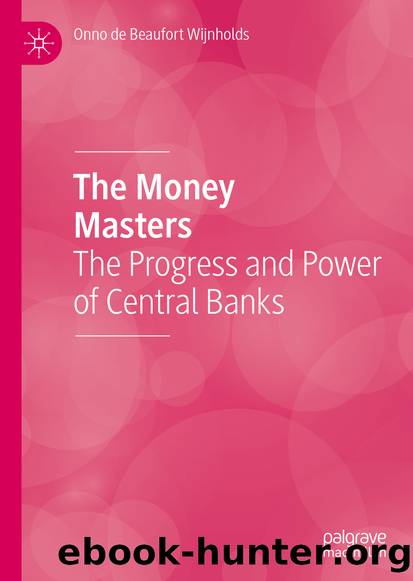The Money Masters by Onno de Beaufort Wijnholds

Author:Onno de Beaufort Wijnholds
Language: eng
Format: epub
ISBN: 9783030400415
Publisher: Springer International Publishing
Establishing the Monetary Union: The Search for Stability
Run-up to the Maastricht Treaty
The idea of a monetary union in the European Union goes back all the way to the Werner report in 1970. Already then, it was clear that exchange rate stability, and eventually a monetary union, was needed to fully reap the benefits of European integration and especially of the internal market. Without a common currency, Member States still had the possibility to devalue their exchange rate to gain competitiveness over other EU countries.
Despite this economic logic, the idea of a monetary union never really gained political momentum for several decades. Instead, the EU opted for several forms of fixed but adjustable exchange rate regimes, starting in 1971. The European Monetary System (EMS) was introduced in 1979, allowing European currencies to fluctuate within a margin of ±2.25 percent of each other. An important drawback of these types of exchange rate arrangements is that they are sensitive to financial market speculation and crises. EU Member States therefore regularly experienced periods of market turbulence and exchange rate realignments. Between 1979 and 1993, the EMS saw as many as 54 realignments of weaker currencies against the D mark. Moreover, these crises became more frequent and more severe when European countries liberalized their capital accounts and capital mobility increased considerably. Subsequently the severe EMS-crises in 1992 and 1993 forced several countries to devalue and Italy and the United Kingdom to even exit from the mechanism. In reaction to these events, EMS fluctuation margins were widened to ±15 percent. With these increasingly severe consequences for Member States and for the functioning of the internal market, the idea of a full monetary union became more attractive on economic grounds.
Meanwhile, political momentum had also increased considerably due to the fall of the Berlin wall in 1989, and the subsequent desire for German reunification. Geopolitically, a monetary union would enable EU countries to embed an enlarged Germany more strongly within Europe. Moreover, it would give other European countries like France more influence over monetary policy in Europe than under a regime of pegging the exchange rate to the D mark. As a result of these rather unique economic and political developments, EU countries decided after all to form a monetary union with a single European currency: the euro.
Download
This site does not store any files on its server. We only index and link to content provided by other sites. Please contact the content providers to delete copyright contents if any and email us, we'll remove relevant links or contents immediately.
Pale Blue Dot by Carl Sagan(4867)
The Rules Do Not Apply by Ariel Levy(4797)
Goodbye Paradise(3672)
Ogilvy on Advertising by David Ogilvy(3464)
Delivering Happiness by Tony Hsieh(3338)
Liar's Poker by Michael Lewis(3330)
Into Thin Air by Jon Krakauer(3268)
Purple Cow by Seth Godin(3112)
Rogue Trader by Leeson Nick(2950)
The Social Psychology of Inequality by Unknown(2907)
The Airbnb Story by Leigh Gallagher(2757)
4 - Harry Potter and the Goblet of Fire by J.K. Rowling(2621)
The Mind Map Book by Tony Buzan(2481)
Bossypants by Tina Fey(2431)
Claridge's: The Cookbook by Nail Martyn & Erickson Meredith(2323)
All the President's Men by Carl Bernstein & Bob Woodward(2305)
Six Billion Shoppers by Porter Erisman(2246)
Master of the Game by Sidney Sheldon(2211)
Alibaba by Duncan Clark(2006)
